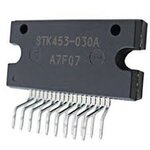T
treez
Guest
Hello,
We have seen competitors' Switch Mode Power Supplies which have TO220 FETs in them which are assembled without having the legs bent so that there is sufficient clearance between drain and source. How are they getting away with this?
As you can see, for a TO220 FET, the through_hole of the pad needs to be 1.2mm in diameter, the “annulus ring” of copper of the pad needs to be at least 0.3mm thick. This means that there is a maximum of 0.74mm of clearance between Drain and Source PCB copper, and the flyback has a peak Vds of 600V.
0.74mm is nowhere near enough clearance for 600V, so how are they getting away with it?
PCB design tutorial (clearance for voltages tabulated on page 9 [top])
https://www.alternatezone.com/electronics/files/PCBDesignTutorialRevA.pdf
TO220 FET datasheet
https://www.st.com/web/en/resource/technical/document/datasheet/DM00049184.pdf
We have seen competitors' Switch Mode Power Supplies which have TO220 FETs in them which are assembled without having the legs bent so that there is sufficient clearance between drain and source. How are they getting away with this?
As you can see, for a TO220 FET, the through_hole of the pad needs to be 1.2mm in diameter, the “annulus ring” of copper of the pad needs to be at least 0.3mm thick. This means that there is a maximum of 0.74mm of clearance between Drain and Source PCB copper, and the flyback has a peak Vds of 600V.
0.74mm is nowhere near enough clearance for 600V, so how are they getting away with it?
PCB design tutorial (clearance for voltages tabulated on page 9 [top])
https://www.alternatezone.com/electronics/files/PCBDesignTutorialRevA.pdf
TO220 FET datasheet
https://www.st.com/web/en/resource/technical/document/datasheet/DM00049184.pdf
